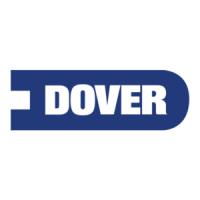21
Connections
3.5.4 Handshake Lines
The three handshake lines (NRFD, NDAC, DAV) control the transfer of
message bytes among the devices and form the method for acknowledging the
transfer of data. This handshaking process guarantees that the bytes on the
data lines are sent and received without any transmission errors and is one of
the unique features of the IEEE-488 bus.
The NRFD (Not Ready for Data) handshake line is asserted by a listener to
indicate it is not yet ready for the next data or control byte. Note that the
Controller will not see NRFD released (i.e., ready for data) until all devices have
released it.
The NDAC (Not Data Accepted) handshake line is asserted by a Listener to
indicate it has not yet accepted the data or control byte on the data lines. Note
that the Controller will not see NDAC released (i.e., data accepted) until all
devices have released it.
The DAV (Data Valid) handshake line is asserted by the Talker to indicate that
a data or control byte has been placed on the data lines and has had the
minimum specified stabilizing time. The byte can now be safely accepted by
the devices.
3.5.5 Interface Management Lines
The five interface management lines (ATN, EOI, IFC, REN, SRQ) manage the
flow of control and data bytes across the interface.
The ATN (Attention) signal is asserted by the controller to indicate that it is
placing an address or control byte on the data bus. ATN is released to allow
the assigned Talker to place status or data on the data bus. The Controller
regains control by reasserting ATN; this is normally done synchronously with
the handshake to avoid confusion between control and data bytes.
The EOI (End or Identify) signal has two uses. A talker may assert EOI
simultaneously with the last byte of data to indicate end-of-data. The Controller
may assert EOI along with ATN to initiate a parallel poll. Although many
devices do not use parallel poll, all devices should us EOI to end transfers
(many currently available ones do not).
The IFC (Interface Clear) signal is asserted only by the System Controller in
order to initialize all device interfaces to a known state. After releasing IFC, the
System Controller is the Active Controller.

